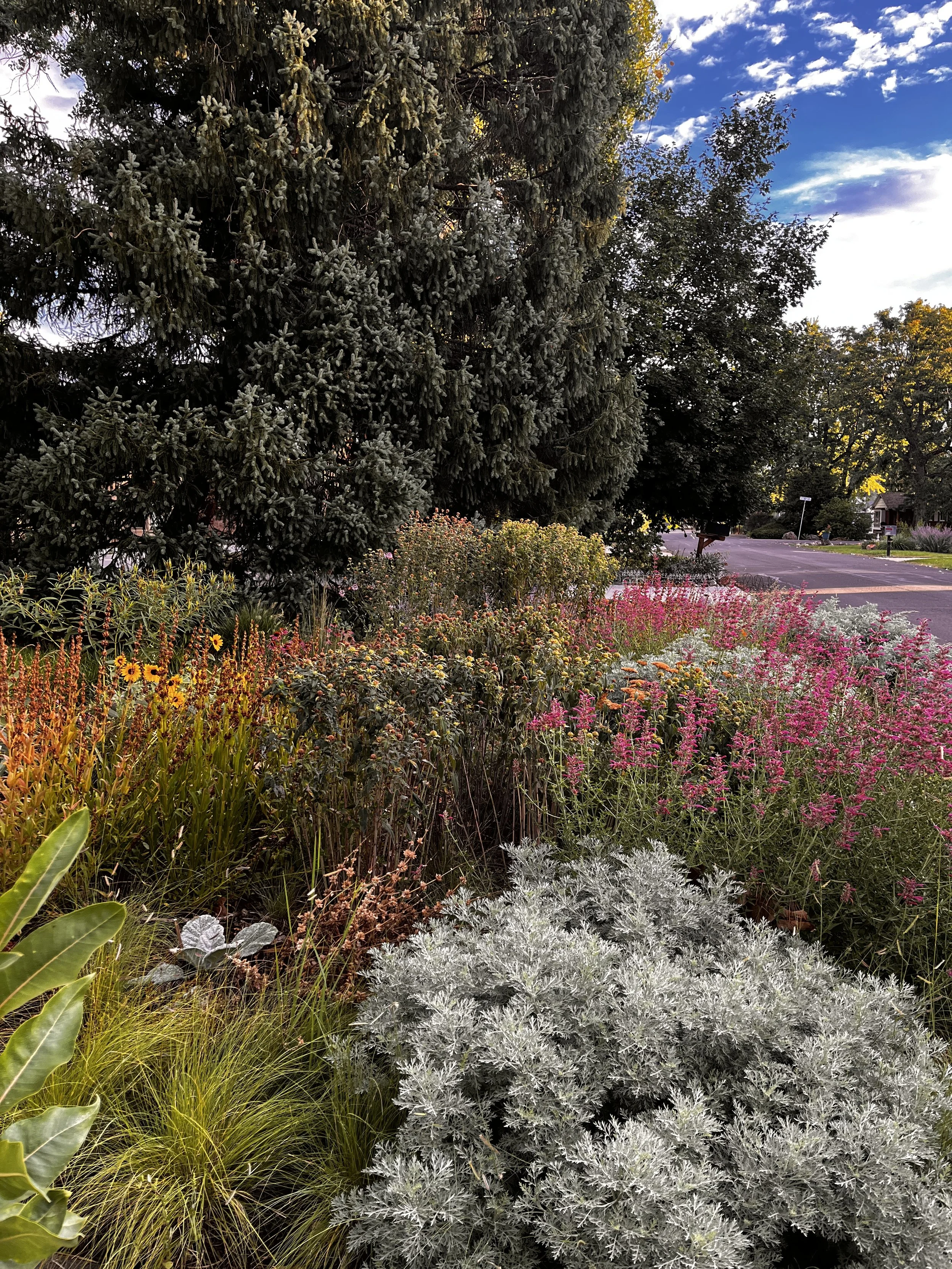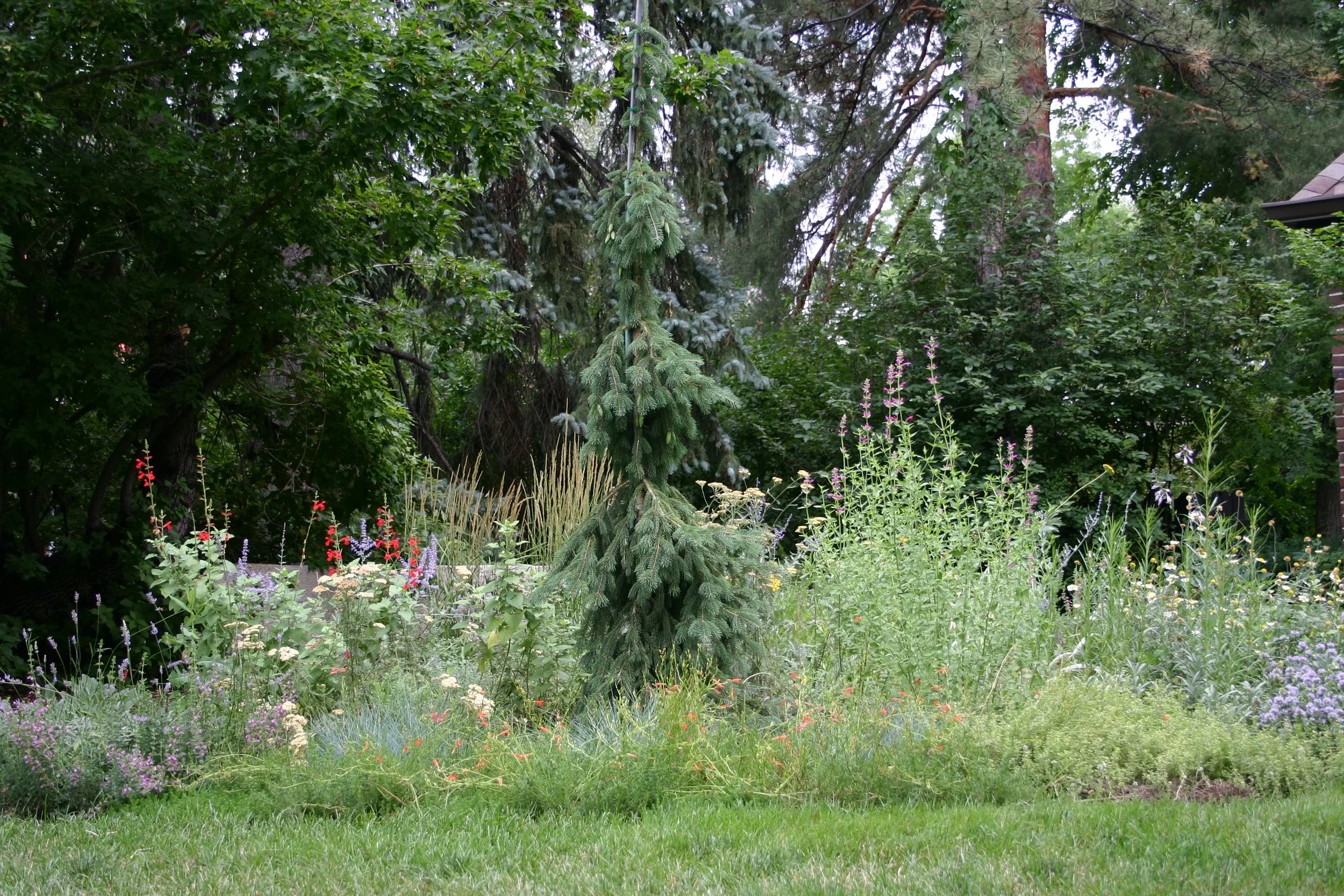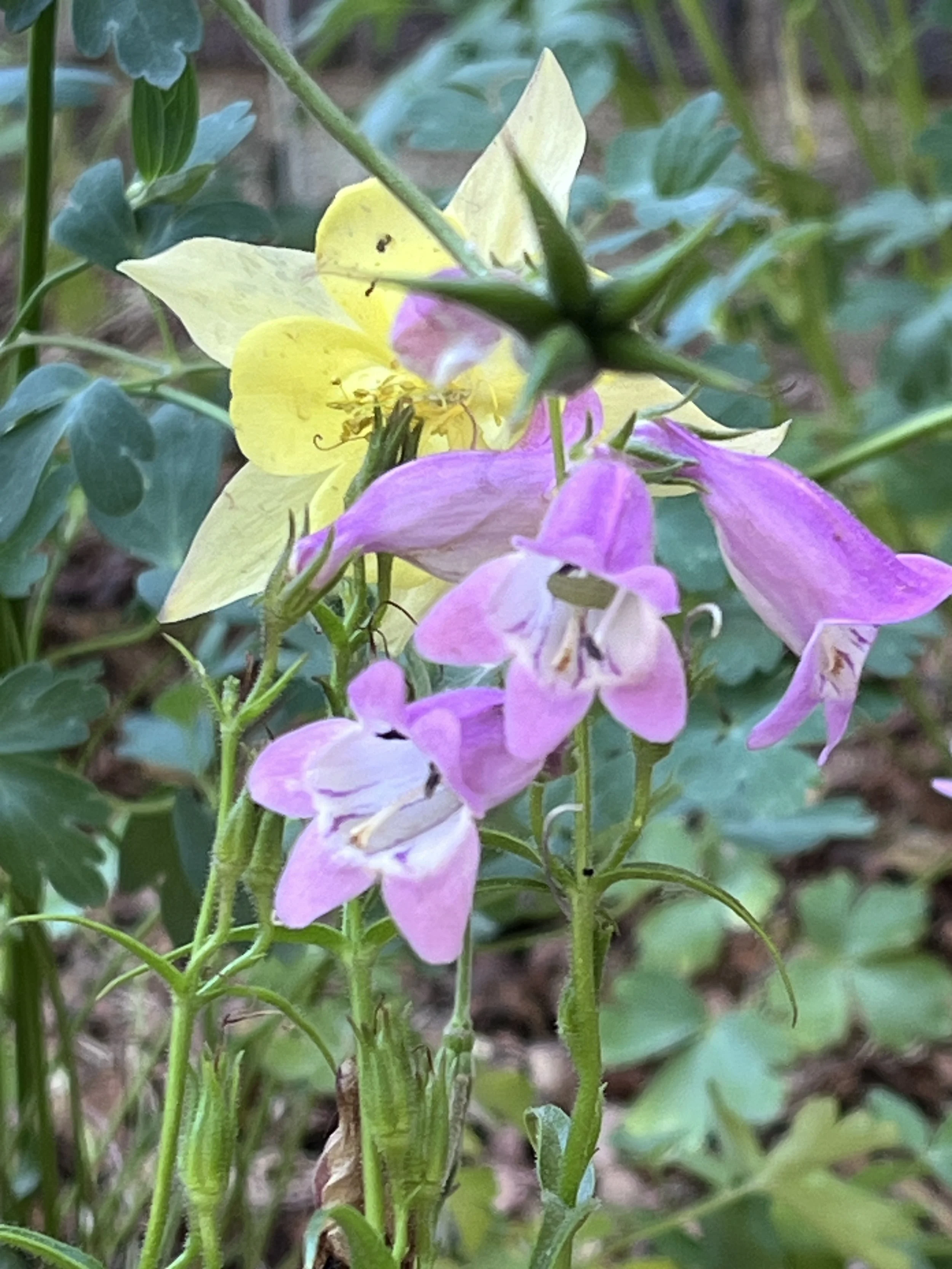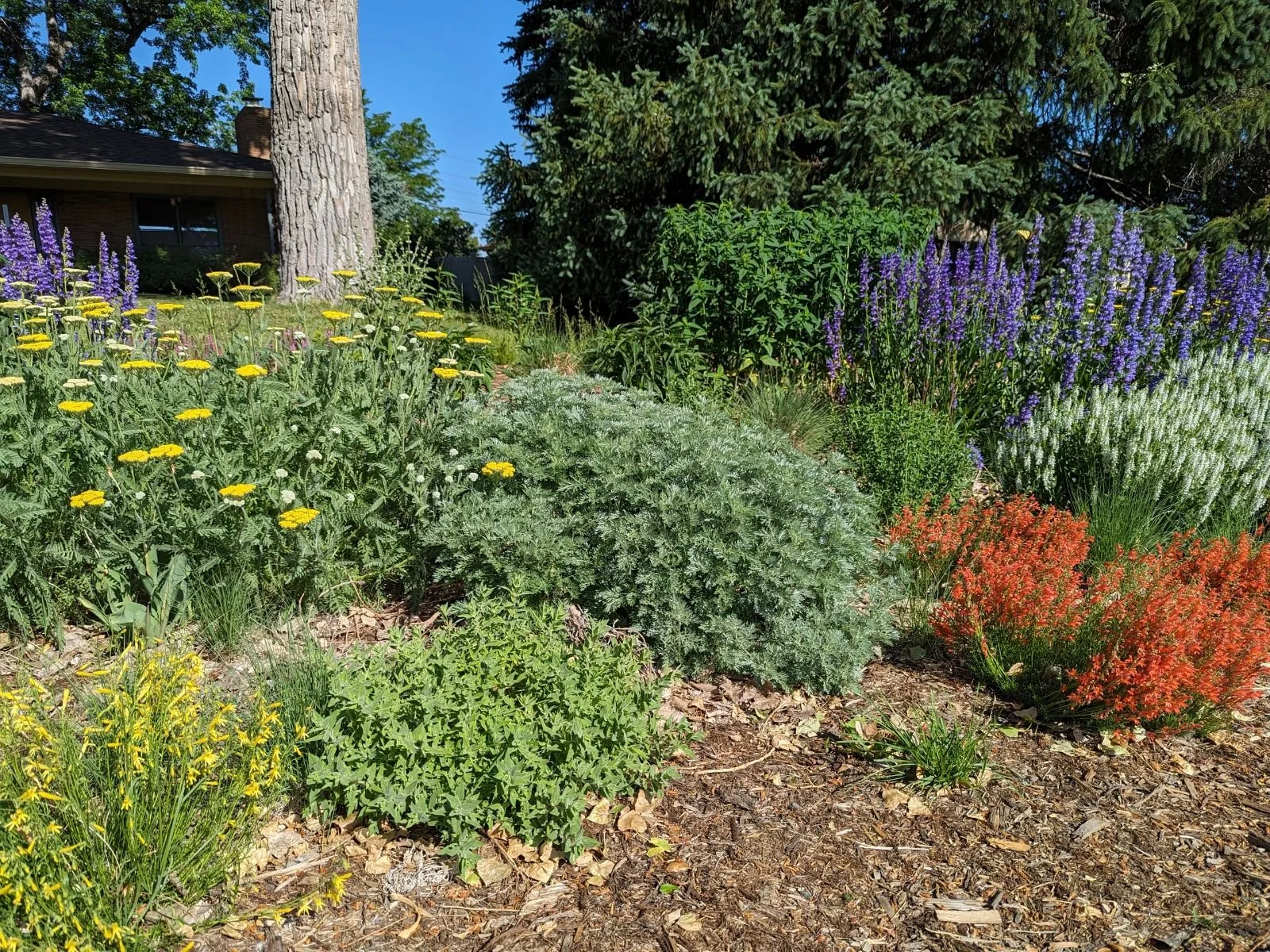When to Hire a Regenerative Garden Designer?
The Difference Between a Regenerative Garden Designer and a Landscape Architect or Landscaper.
When you're ready to transform your outdoor space, it can be hard to know who to call. Do you hire a landscape architect? A landscaper? Or, is there another option that aligns more deeply with your values and the health of your environment?
As a regenerative garden designer, my approach is significantly different from that of a landscape architect or landscaper. Honeywood creates bespoke ecological landscapes that are intentionally designed and built to support life.
How are we different?
1. Living Landscapes vs. Hardscapes. We add naturalistic beauty and resilience to your space. Traditional landscape architects focus on structures, patios, and hardscaping.
We focus on life.
Our designs are plant centered, specifically created to invite butterflies, bees, and birds into your backyard. They support urban habitats and encourage healthy food webs. Our gardens are vibrant, seasonal, biodiverse ecosystems that shift and grow with time.
2. A Better Solution Than a Landscaper. Landscapers typically work from templates and trends. Their services often focus on the immediate visual outcome such as mowed lawns, mulch or rock beds, and rows of ornamental plants. These controlled environments require high inputs of water, fertilizer, and ongoing maintenance. The result? A landscape that might look good for a season but struggles to thrive over time without the use of ongoing resources.
Honeywood’s approach is different. We encourage abundant ecosystems and solve problems.
3. Regeneration vs. One Size Fits All. Regenerative gardens are about healing the land while creating naturalistic beauty. Our gardens are not aimed at looking like all the other yards in your neighborhood. Our goal is rebuilding healthy soil, conserving water, reducing waste, capturing carbon, increasing habitat for native species, and protecting pollinators with a big dose of beauty sprinkled on top.
While a landscaper may deliver a manicured lawn and a sterile yard, Honeywood creates one-of-a-kind living landscapes that thrive with minimal intervention.
4. Planting and Growing with Purpose. We use mostly native, drought tolerant, pollinator friendly plants that are adapted to our specific region. These plants require less water, less maintenance, and no chemicals to thrive. Rewilded gardens are not only beautiful, they are resilient and essential to restoring balance in urban and suburban environments.
5. Your Garden. Your Ecosystem. Landscape architects often approach projects through a top down, heavily engineered process. Their lens is fine tuned to a larger scope of work than what we offer.
Most residential landscapers are only interested in installing as many conventional landscapes as they can in order to make larger profits. They’re not experienced or invested in sustainable alternatives to traditional lawns, overused trees and shrubs, and concrete patios.
Regenerative design is collaborative and focuses on your garden’s unique microclimates while using the right plants in the right place. We’re dedicated to resilience in the face of climate change, biodiversity loss, and soil degradation.
We value quality over quantity.
6. Healing Begins at Home. Many of our clients come to us frustrated. They’re tired of struggling to keep high maintenance, water thirsty landscapes alive. They’re disillusioned by cookie cutter designs that don’t reflect their values or support local ecology. They want something meaningful that adds beauty to their home and serves a purpose. That’s where we come in.
7. Regenerative Gardens as Long Term Investments. While traditional landscapes may seem more cost effective initially, they often come with hidden expenses. Water bills, chemical treatments, soil amendments, and weekly maintenance add up over time.
They also come with hefty environmental costs by releasing more carbon into the atmosphere and leaching toxic chemicals into the soil, air, and water. More importantly, pesticides and fertilizers used in traditional landscapes play a key role in endangering pollinators and urban habitats.
As a long term investment, regenerative gardens are designed to grow more resilient with time and rebuild threatened systems without ongoing additional expenses. Healthy soil reduces erosion and runoff. Native plants adapt and self-sustain. Once fully established, management becomes about observation and guidance rather than constant correction. You’re investing in a healthy ecosystem that supports life year after year.
Regenerative gardens are priceless and rewarding. You’ll reconnect with nature while watching pollinators and birds return to your space. You’ll take pride in supporting local biodiversity. You’ll have peace of mind knowing your garden is making a difference.
Honeywood is focused on the long view. This isn’t landscaping as usual. We create living landscapes inspired by nature.
Honeywood Garden Design helps you create and build regenerative landscapes.






